You are using an out of date browser. It may not display this or other websites correctly.
You should upgrade or use an alternative browser.
You should upgrade or use an alternative browser.
Electric and Hydrogen aeroplanes - feasibility and issues
- Thread starter Grey Havoc
- Start date
- Joined
- 27 May 2008
- Messages
- 1,043
- Reaction score
- 2,003
The Bell X-1 could not take off under its own power. Ohain's first jet engine would not run on storable hydrocarbon fuel. Yet powered flight including at supersonic speed, using hydrocarbon-fuel gas turbines, is economically viable or at least routinely achievable today. That said, I'd agree that - for proper airliners at least - fuel cells are not the way forward, the power-to-weight ratio of gas turbines is simply too good.
While this shows hydrogen can succeed, it also demonstrates that it is not a near-term solution, for aerospace applications perhaps not even mid-term. Between the first experiments, the stage we are currently at with hydrogen tech, and successful application it took a decade or more, at a time where the pace of progress was faster. But longer-term it is probably what we need to aspire to - SAF production is not likely to keep up with demand for an acceptable cost and whether batteries can ever play a role at all is doubtful to say the least (weight).
Apologies to correct;- The Bell X1 could and indeed once did take off under its own power (5 Jan 1949). Whittle and Ohain first turbojets, although elegant and brilliantly conceived, they were “garden shed” projects on grand scale. What really unleashed the gas turbine potential was the material technology, in particularly Ni Cr Co alloys which were being developed as electrical heaters. A combination of the newly emerging materials and the real industrialisation saw a massive rapid leap in performance. There’s nothing similar in fuel cells and Universal Hydrogen is already hard up against the laws of physics. Their fuel cell needs a five to ten times improvement in volumetric energy density and there’s no technology waiting in the wings. In fact quite the opposite, the key catalyst material is, and has always been in critically short supply. It needs some near miracles in electro chemistry to become viable.
In my view, scratch below the surface of the hype and this demonstrates that H2 can’t succeed as an aviation fuel. As said before if SAF fixes the problem why fix it a second time.
Last edited:
Practically this is not the case, but we had this topic before, I think even in this thread. The only fuel cells which are quite flexible with the fuels are high temperature fuel cells which are not useful for propulsion because they need to run steadily and are only allowed to be switched off twice a year if you want to keep the warranty. They need a lot of time for reaching the working temperature and don’t like fast changes in power output. As said somewhere here before, these types of fuel cell could be useful for APUs for large airliner were almost always a high power demand for climatization and auxiliary systems is needed. Due to their high efficiency, they could run during the flight and feed the engines with their surplus energy.You know that you can do fuel cell from many different fuels. You are certainly not constrained by one single type of fuel.
Low temperature fuel cells are all running by hydrogen, even if they use Methanol or any other hydrocarbon as fuel. The fuel is reformed to hydrogen and cleaned before it is feed to the cell. Chrysler and some other OEM planed to use such systems for cars about 25 years ago, but these systems were large and heavy, needed a lot of cooling and are less efficient than a good Diesel. You definitely don’t want something like that in a plane.
Apologies to correct;- The Bell X1 could and indeed once did take off under its own power (5 Jan 1949).
I stand corrected. Considered so dangerous though that it was outside normal operating procedure, which kind of makes my point.
There’s nothing similar in fuel cells and Universal Hydrogen is already hard up against the laws of physics. Their fuel cell needs a five to ten times improvement in volumetric energy density and there’s no technology waiting in the wings. In fact quite the opposite, the key catalyst material is, and has always been in critically short supply. It needs some near miracles in electro chemistry to become viable.
Again, I don't disagree on the prospects (or rather lack thereof) of the fuel cell in commercial aviation. As Ohain so conveniently demonstrated, gas tubines run just fine on hydrogen however
In my view, scratch below the surface of the hype and this demonstrates that H2 can’t succeed as an aviation fuel.
That's where we disagree.
As said before if SAF fixes the problem why fix it a second time.
It doesn't though - there probably will never be enough SAF to go around (as in enable a completely CO2-neutral airline industry).
Last edited:
red admiral
ACCESS: Top Secret
- Joined
- 16 September 2006
- Messages
- 1,468
- Reaction score
- 1,541
Definitely need power to liquid SAFs rather than biomass, waste etc. to meet demand and minimise land use etc. Projections are >80% from PtL needed to meet demand. All that PtL needs a lot of low emissions energy to generate, but so does hydrogen.It probably can't scale up far enough. Hydrogen production is significantly more energy-efficient than SAF because biomass is very limited in scope. Many different demands, including some that use other energy sources today, will be competing for renewable electricity input in the more distant future. If hydrogen requires less that's a potentially big cost advantage.
In the long term (2050+) hydrogen might be about 50% cheaper than PtL. But remember that fuel costs are only one part of DOC, typically 25% ish. So we're talking about a potential 12% DOC difference - but this ignores the massive capital costs of setting up that global hydrogen infrastructure and completely changing the global fleet. It doesn't come close to making sense for larger aircraft.
The infrastructure will have to come anyway though, so the capital cost of transformation will not have to be borne by the airline industry alone. There are plenty of other fields where - long term - there is no real alternative to hydrogen, might as well tag along for the ride (the electric car industry didn't invent the battery tech they now depend on). I mean, PtL requires hydrogen infrastructure for production...
It's a long term ambition, no doubt about it (not least because of the typical airframe life cycle and the implication for global fleet composition), your 2050+ time frame is definitely in the right ball park. But ultimately I believe that's where we're going to end up.
It's a long term ambition, no doubt about it (not least because of the typical airframe life cycle and the implication for global fleet composition), your 2050+ time frame is definitely in the right ball park. But ultimately I believe that's where we're going to end up.
With new innovative nuclear power concept evolving and also with ever cheaper solar and wind energy, the cost of energy is going down, at least in certain areas of the world. But the cost of rare metal which is required for batteries and, to a lesser extent, also for fuel cells will definitely go up, so that synthetic fuels will become the cheaper solution.
As I mentioned before, but I have to go more into detail, when electricity can be replaced by heat (e.g. from molten salt reactors or solar heat), the efficiency of synthetic fuels will more than double than by using electricity. I also believe, that hydrogen will be more costly than synthetic fuels in the long run, due to the great effort in handling the stuff which is limiting the global transport from areas with surplus energy to the areas with a high demand. More ore less all scenarios for a worldwide hydrogen distribution are planning to use Ammonia as a carrier, which , by the way, can be used as a fuel directly and is much better suitable for storage and transport than hydrogen.
As I mentioned before, but I have to go more into detail, when electricity can be replaced by heat (e.g. from molten salt reactors or solar heat), the efficiency of synthetic fuels will more than double than by using electricity. I also believe, that hydrogen will be more costly than synthetic fuels in the long run, due to the great effort in handling the stuff which is limiting the global transport from areas with surplus energy to the areas with a high demand. More ore less all scenarios for a worldwide hydrogen distribution are planning to use Ammonia as a carrier, which , by the way, can be used as a fuel directly and is much better suitable for storage and transport than hydrogen.
aonestudio
I really should change my personal text
- Joined
- 11 March 2018
- Messages
- 2,546
- Reaction score
- 5,969
Here is an intresting study which: was done by a solar power research group:
Sorry, it is in German, but google translate will do a good job!
To make a long story short, they estimate an efficiency of 55 % percent for the synthesis of liquid H2 and 45 % for the synthesis of Methanol with DAC (athospheric). The boil off losses of hydroen are not included, so that H2 isn't so much better as Methanol. On the other hand, a fuell which is directly fed with H2 will be much more efficient than any propulsion with Methanol.
Here we have a more detailed and intresting other study:
This study will give much higher efficiencys for some variants of Methanol or syn. fuels synthesis than the study above, because they regard the possibility of using the waste heat from the synthesis process for the DAC process. Low temperature DAC only need heat of about 100 °C to drive the CO2 desorbtion, which makes to integrated process much more energy and cost efficient.
Hydrogen and Ammonia are surly the most efficient fuel in terms of efficiency, but when it comes to cost efficiency, the differences will be much smaller and might be the other way round.
Unlike in the video, hydrongen is not the only solution, it will be intresting to see, who will make the race...
Sorry, it is in German, but google translate will do a good job!
To make a long story short, they estimate an efficiency of 55 % percent for the synthesis of liquid H2 and 45 % for the synthesis of Methanol with DAC (athospheric). The boil off losses of hydroen are not included, so that H2 isn't so much better as Methanol. On the other hand, a fuell which is directly fed with H2 will be much more efficient than any propulsion with Methanol.
Here we have a more detailed and intresting other study:
This study will give much higher efficiencys for some variants of Methanol or syn. fuels synthesis than the study above, because they regard the possibility of using the waste heat from the synthesis process for the DAC process. Low temperature DAC only need heat of about 100 °C to drive the CO2 desorbtion, which makes to integrated process much more energy and cost efficient.
Hydrogen and Ammonia are surly the most efficient fuel in terms of efficiency, but when it comes to cost efficiency, the differences will be much smaller and might be the other way round.
Unlike in the video, hydrongen is not the only solution, it will be intresting to see, who will make the race...
aonestudio
I really should change my personal text
- Joined
- 11 March 2018
- Messages
- 2,546
- Reaction score
- 5,969

Nine Mile Point Begins Clean Hydrogen Production
Nine Mile Point facility is the first-of-its-kind in the United States to generate clean hydrogen using nuclear power.
alberchico
I really should change my personal text
- Joined
- 14 January 2014
- Messages
- 573
- Reaction score
- 1,082
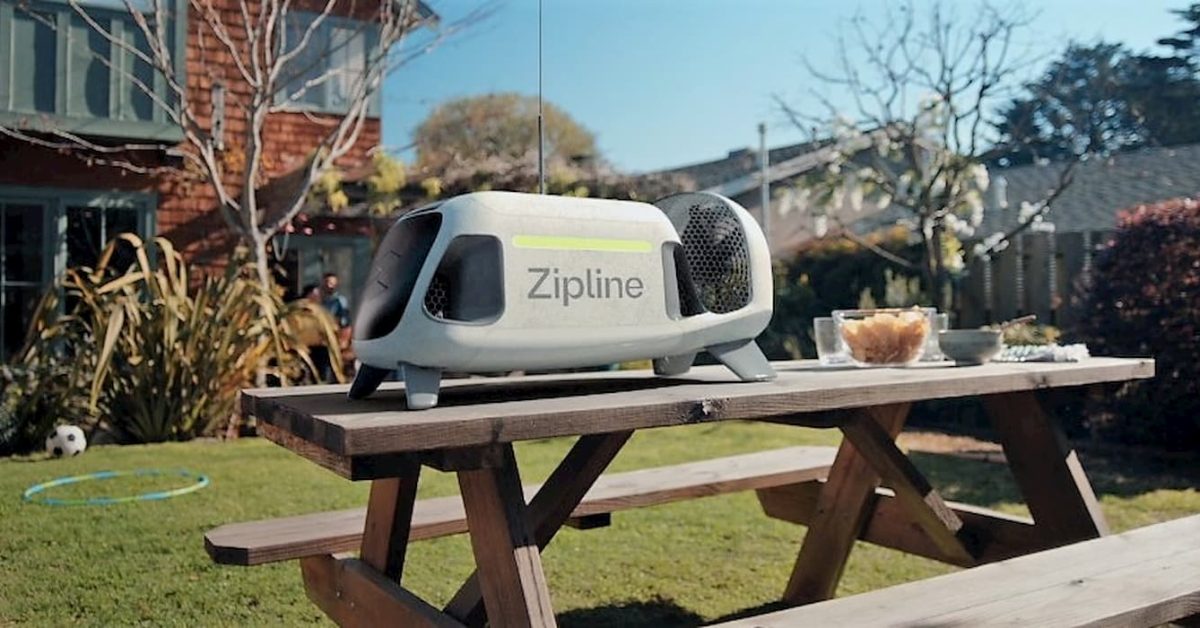
These adorable electric autonomous delivery drones use 97% less energy for faster transit
Say goodbye to delivery delays due to traffic and weather. California-based startup Zipline is revolutionizing how we receive goods with...
 electrek.co
electrek.co
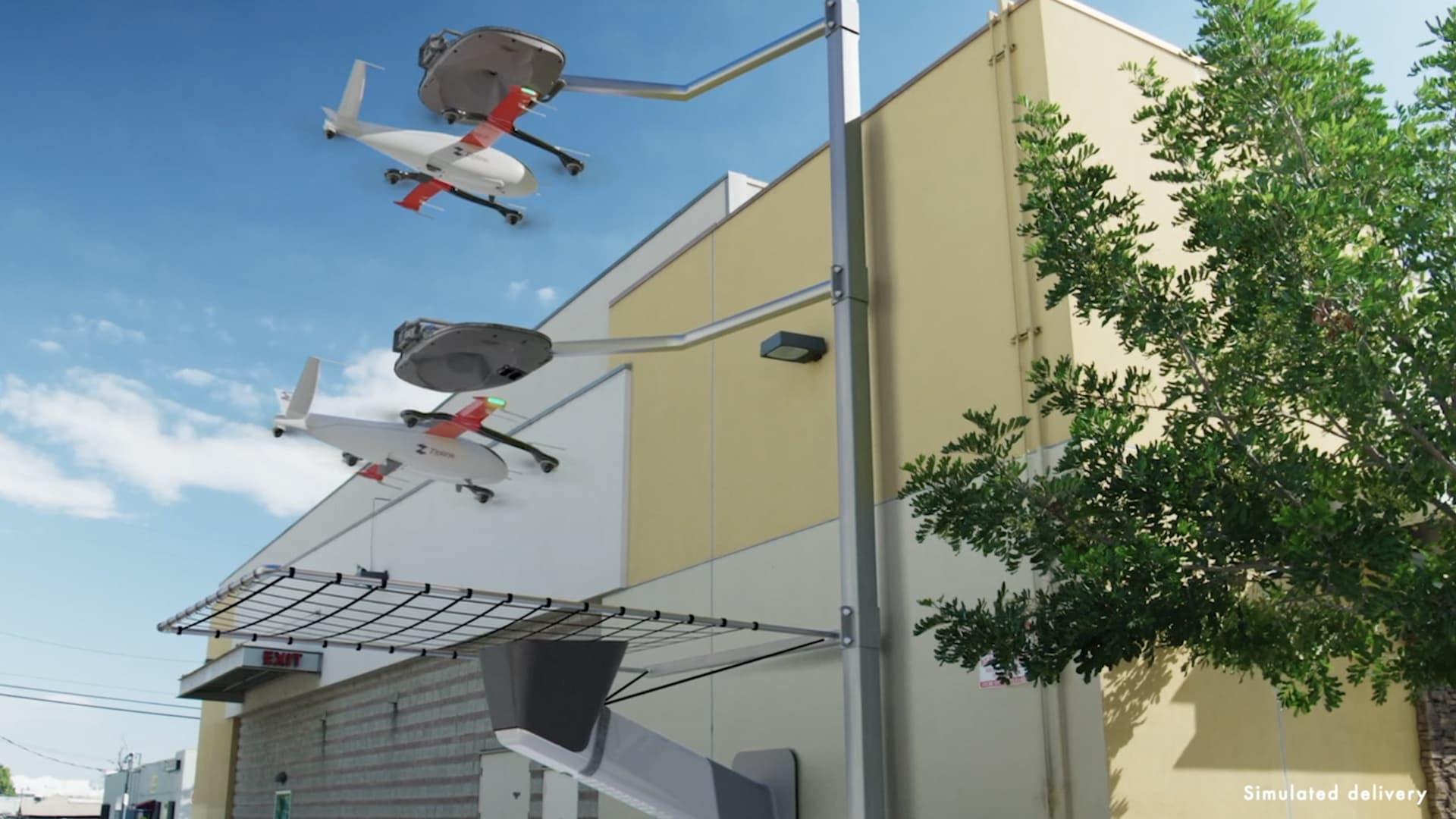
Zipline unveils P2 delivery drones that dock and recharge autonomously
Logistics startup Zipline wants to make deliveries by drone a sustainable, everyday convenience in the U.S.
"Zipline’s new drone, dubbed the Platform 2 or P2 Zip, is capable of carrying up to eight pounds worth of cargo within a ten-mile radius, and can land a package on a space as small as a table or doorstep."
View: https://mobile.twitter.com/ryanzip/status/1636107658204975104
Even though it's not a full sized aircraft, this thing is the closest we will come to having electric planes flying over our heads in the near future.
Last edited:
I’ve seen such drone concepts more than once… Instead of flying drones, small robots (R2d2 size…) could simply use the sidewalks to deliver the parcels from door to door. Unlike flying drones, these could transport more than one parcel and also much heavier weight. The safety issues are much easier to solve and they can be robust enough to withstand dog attacs….
Some plans for synthetic fuel out of nuclear energy (electricity and heat):
 www.world-nuclear-news.org
www.world-nuclear-news.org
UK urged to be world leader in nuclear-derived synthetic fuels : Energy & Environment - World Nuclear News
Large-scale production of nuclear-derived net-zero synthetic fuels could help hard-to-decarbonise sectors such as aviation and shipping, according to a report by energy consultants Equilibrion and the Nuclear Industry Association.
I am not even sure that food and safety agencies would validate them for that [sa]usage.I’ve seen such drone concepts more than once… Instead of flying drones, small robots (R2d2 size…) could simply use the sidewalks to deliver the parcels from door to door. Unlike flying drones, these could transport more than one parcel and also much heavier weight. The safety issues are much easier to solve and they can be robust enough to withstand dog attacs….
alberchico
I really should change my personal text
- Joined
- 14 January 2014
- Messages
- 573
- Reaction score
- 1,082
I am not even sure that food and safety agencies would validate them for that [sa]usage.I’ve seen such drone concepts more than once… Instead of flying drones, small robots (R2d2 size…) could simply use the sidewalks to deliver the parcels from door to door. Unlike flying drones, these could transport more than one parcel and also much heavier weight. The safety issues are much easier to solve and they can be robust enough to withstand dog attacs….
I think one big problem with food delivery drones is that there would obviously be a surcharge for aerial deliveries to help pay for this service. How much money are people willing to fork over just to get a meal delivered to them a few minutes earlier than a guy in a moped ? I think the business case for delivery drones has always been shaky at best. But if someone wants to throw large sums at money at this concept to try to get it to work, I'm all for it. At least when it comes to medical deliveries it has a future.
Because flying drones can't resist flying dogs attacks ? (I'll get my coat)The safety issues are much easier to solve and they can be robust enough to withstand dog attacs….
I am not even sure that food and safety agencies would validate them for that [sa]usage.

@alberchico The guys with the moped aren’t really cheap (at least in Germany), and when I’m hungry I don’t want to wait more than a hour for a almost cold pizza. I would really prefer to let them land on my balcony with a fresh meal in short time.
@Archibald Despite it was ment to be slightly funny, it could turn out to become a real problem. A lightweight anoying sounding thing which smells like food, will definatelly craze some dogs. A dog bite can release serios forces and no practical drone can be amored against it.
@Archibald Despite it was ment to be slightly funny, it could turn out to become a real problem. A lightweight anoying sounding thing which smells like food, will definatelly craze some dogs. A dog bite can release serios forces and no practical drone can be amored against it.
alberchico
I really should change my personal text
- Joined
- 14 January 2014
- Messages
- 573
- Reaction score
- 1,082
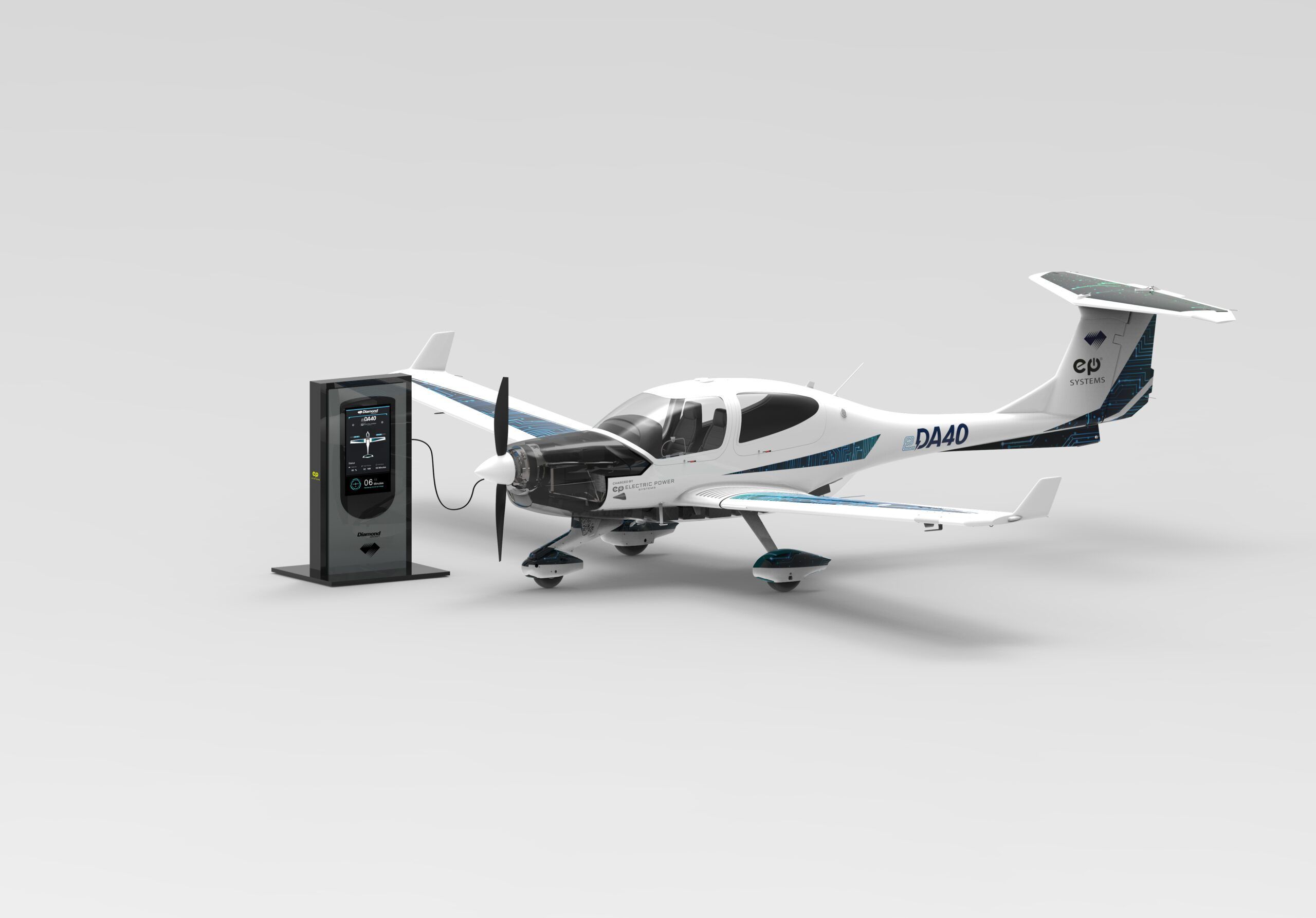
Diamond Names Launch Customer For Electric eDA40 - AVweb
Diamond Aircraft has announced that Lufthansa Aviation Training (LAT) will be the launch customer for its all-electric eDA40 trainer.
 www.avweb.com
www.avweb.com
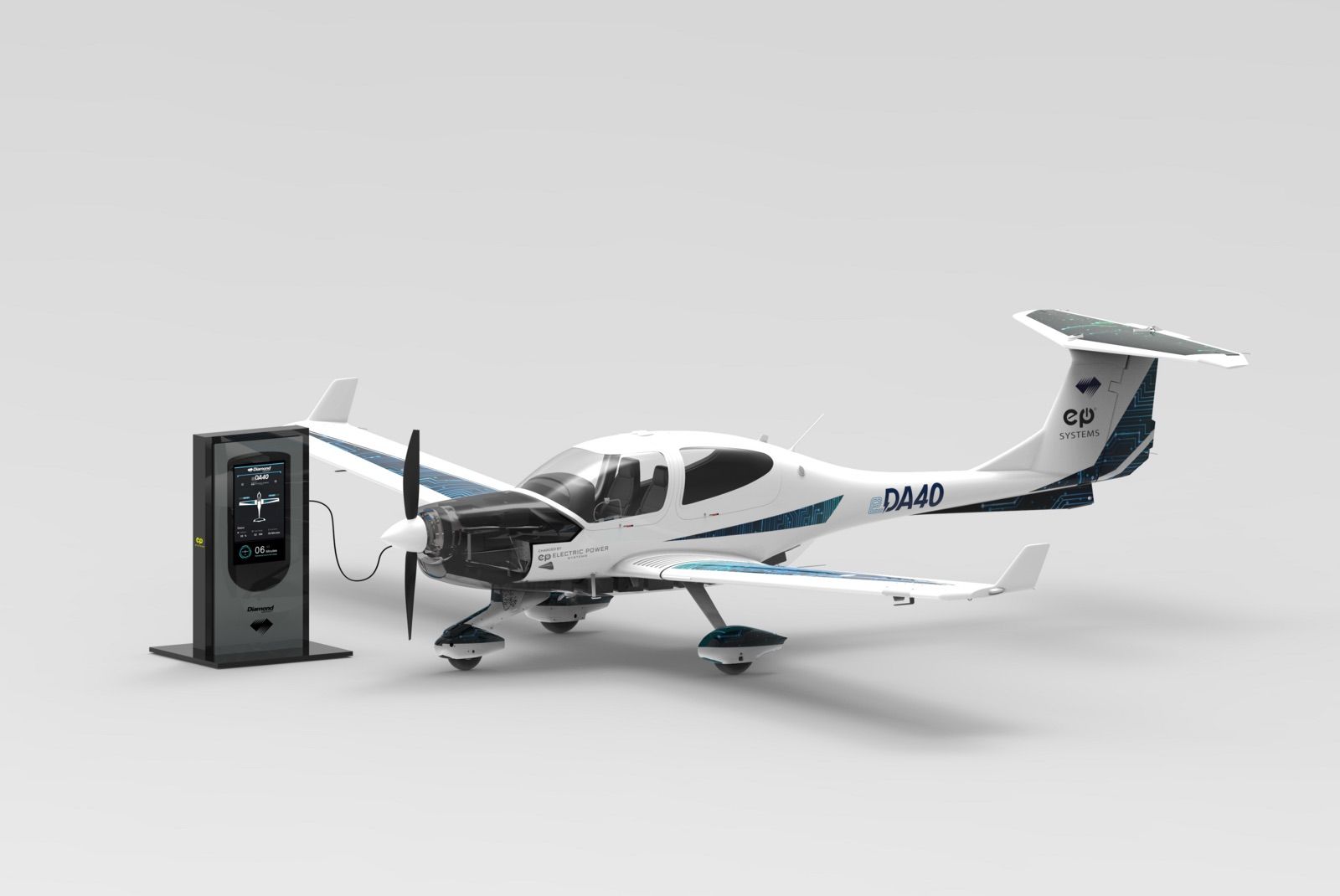
Diamond Joins The eFray With Plans For An All-Electric eDA40 - AVweb
Diamond Aircraft has announced plans for an all-electric version of its ubiquitous DA40 trainer to be called the eDA40
 www.avweb.com
www.avweb.com
Even though 90 minutes of endurance sounds impressive, you have to look carefully at the fine print:
"The 90-minute flight endurance may be aspirational, however, as Diamond said in its announcement that it expects such endurance “as the battery technologies evolve.”
There are also some certification issues regarding whether or not this battery powered variant would be grandfathered in or would be treated as a clean sheet design by regulators:
“They’re saying it’s too big a change, you have to go all-new Amendment 64. That’s a big problem for us because in Amendment 64 there are new stall/spin characteristics which our airplanes weren’t designed for.”
EASA also is demanding additional protections around the battery pack that Diamond is insisting is not needed and would add unnecessary weight:
“Our approach is the module itself is the explosive zone,” he said. “EASA doesn’t agree. They’re really pushing on no propagation cell-to-cell, which is not easy to do and increases weight if you have to go that way.” Our approach is the module itself is the explosive zone,” he said. “EASA doesn’t agree. We’ll see where that goes because they’re looking for two levels. They’re really pushing on no propagation cell-to-cell, which is not easy to do and increases weight if you have to go that way.”
EASA also seems to be concerned about how the 400 pounds of batteries located in the belly pod would fare during a rough landing.
"It is uncertain whether authorities will accept Diamond’s and EPS’ approach of containing the thermal runaway within a unit within the aircraft, Bruce said. Another issue is testing, and whether regulators will require a thermal-runaway test on the aircraft itself. "
It's going to be interesting to see how some of these designs handle a full on thermal runaway test. Imagine if regulators insist on these machines having so much protections around the battery pack that the excess weight completely wrecks the range and payload. You are out of luck at that point. I have a feeling that trying to meet these certification hurdles is what's going to kill off 90% of these start ups.
Diamond Details Certification Challenges For Electric Trainer | Aviation Week Network
Diamond Aircraft is facing challenges to reaching agreement with regulators on requirements for certification of its eDA40 electric trainer. Battery safety is a key concern for certification, which is planned for 2023.
Last edited:
- Joined
- 24 November 2008
- Messages
- 1,334
- Reaction score
- 1,682
Interesting article by AW and a reminder what's the current status of battery technology:
"...The eDA40’s 85-kWh system comprises 22 modules in two redundant strings. Each module has 24 lithium-ion pouch cells and an energy density of 205 Wh/kg including casing, connectors and thermal runaway protection..."
"...The eDA40’s 85-kWh system comprises 22 modules in two redundant strings. Each module has 24 lithium-ion pouch cells and an energy density of 205 Wh/kg including casing, connectors and thermal runaway protection..."
alberchico
I really should change my personal text
- Joined
- 14 January 2014
- Messages
- 573
- Reaction score
- 1,082
A good overview of Zipline's drone operations as well as a preview of their upcoming food delivery system.
Last edited:

A Vision for America’s Continued Global Leadership in Aeronautics | OSTP | The White House
By Dr. Ezinne Uzo-Okoro, OSTP Assistant Director for Space Policy Grant Farnsworth, OSTP Senior Policy Advisor Since the earliest days of aviation, the United States has led the world in research, development, and deployment of technologies that ensure safe and efficient flight. This leadership...
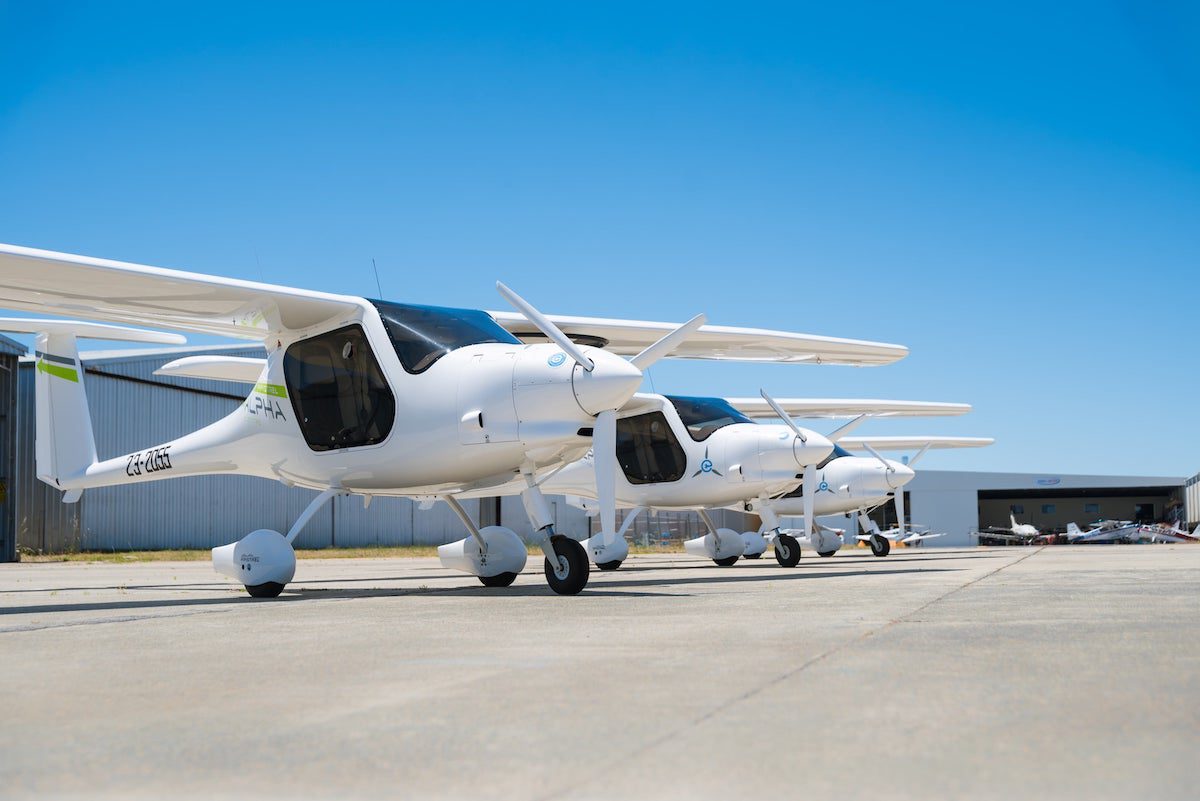
"This thing is amazing:" Flying school uses electric plane for pilot training
Korum Ellis is on a mission to put "bums in seats" of electric planes so pilots can experience how much better they are than fossil fuelled aircraft.
alberchico
I really should change my personal text
- Joined
- 14 January 2014
- Messages
- 573
- Reaction score
- 1,082
Aviation Week had an interesting article in this week's issue about a new type of lithium battery in development. It has the potential to increase energy density by as much as 4 times what is available now. But it will take more than a decade to move from laboratory to reality. I wonder how many of these Evtol companies will survive that long to take advantage of these advancements in battery tech ? Now I understand why experienced companies like Embrarer have said that a fully electric 9 seater would only be feasible by 2035. They have a much better understanding of the technical issues facing these types of aircraft than many of these startups.

IIT, Argonne team designs Li2O-based Li-air battery with solid electrolyte; four-electron reaction for higher energy density
Researchers at the Illinois Institute of Technology (IIT) and US Department of Energy’s (DOE) Argonne National Laboratory have developed a lithium-air battery with a solid electrolyte. The battery is rechargeable for 1000 cycles with a low polarization gap and can operate at high rates. A paper...
www.greencarcongress.com
alberchico
I really should change my personal text
- Joined
- 14 January 2014
- Messages
- 573
- Reaction score
- 1,082
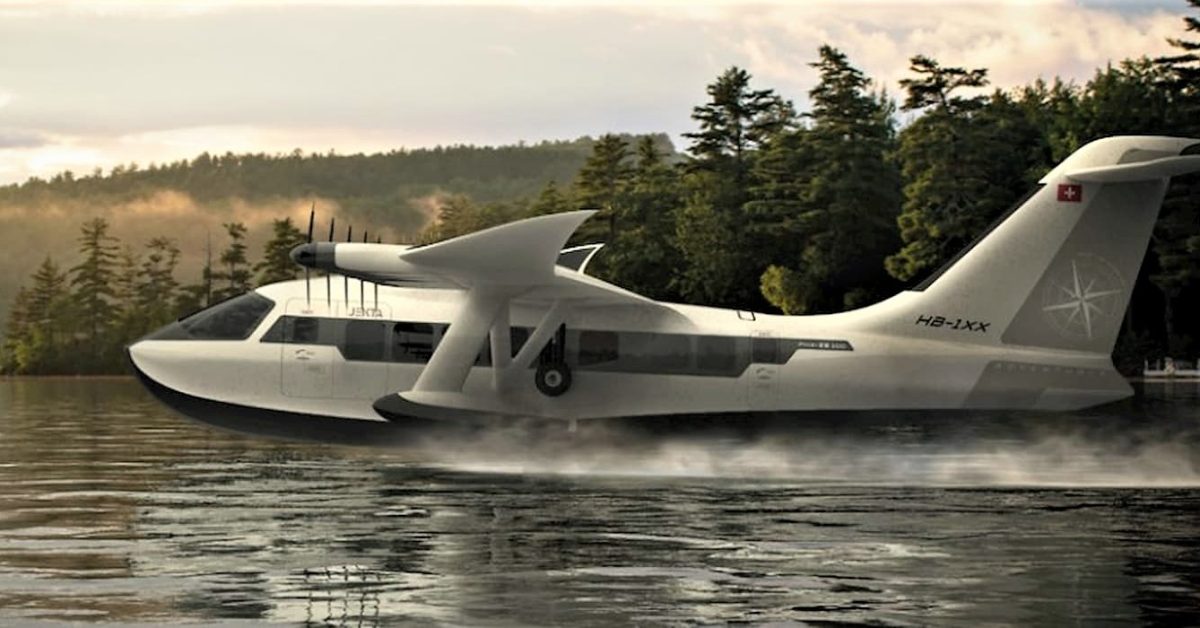
Electric seaplane maker secures first order en route to accelerate eco-friendly air travel
Switzerland-based aircraft manufacturer Jekta Switzerland SA is developing an electric passenger hydro aircraft, or seaplane, capable of flying nearly 100...
I always thought amphibians were a poor choice for electrification. The amount of power needed to overcome the large amounts of drag from the pontoons and the hull shaped fuselage is going to drain your battery in no time.
Another aspect to consider is that lithium-air batteries currently have a shorter lifespan than lithium-ion batteries, which means they may need to be replaced more frequently, leading to higher operating costs over time.It has the potential to increase energy density by as much as 4 times what is available now.
They promise 1200 cycles, but I guess its just another wonder battery....
I heard quite often, that solid state batteries are much safer than current Lio Batteries and have a lot higher energy desity, but than severa battery busses from Mercedes all equiped with superior solid state batteries caught fire and they were withdrawn from service..
I heard quite often, that solid state batteries are much safer than current Lio Batteries and have a lot higher energy desity, but than severa battery busses from Mercedes all equiped with superior solid state batteries caught fire and they were withdrawn from service..
Any air breathing battery (so far there is no recharable air breathing battery), has the safety advantage that the oxidizer is not stored in the battery next to the fuel. So from a safety standpoint, this really could be an improvment.
Another aspect is, that it needs air supply like a fuel cell. So it would need a filtration system, an electric driven superchager with charge air cooling and so on. Somehow it combines the disadvantages of a battery with a fuel cell...
Another aspect is, that it needs air supply like a fuel cell. So it would need a filtration system, an electric driven superchager with charge air cooling and so on. Somehow it combines the disadvantages of a battery with a fuel cell...
Last edited:
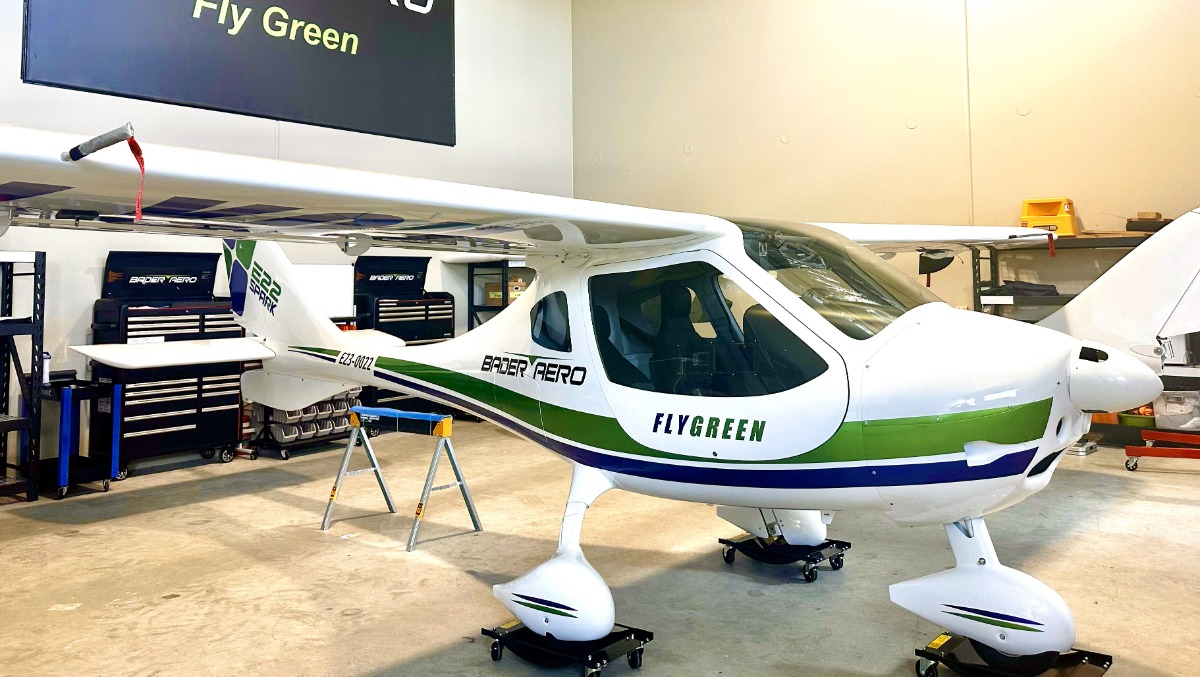
Adelaide firm to unveil Australia’s first commercial electric aircraft
The E22 Spark aircraft, built by Adelaide-based Bader Aero, is a two-seater with 180m takeoff, a max range of 300+ kilometres, up to 90-minute flight time, and a cruising speed of 110-130 knots.
 australianaviation.com.au
australianaviation.com.au
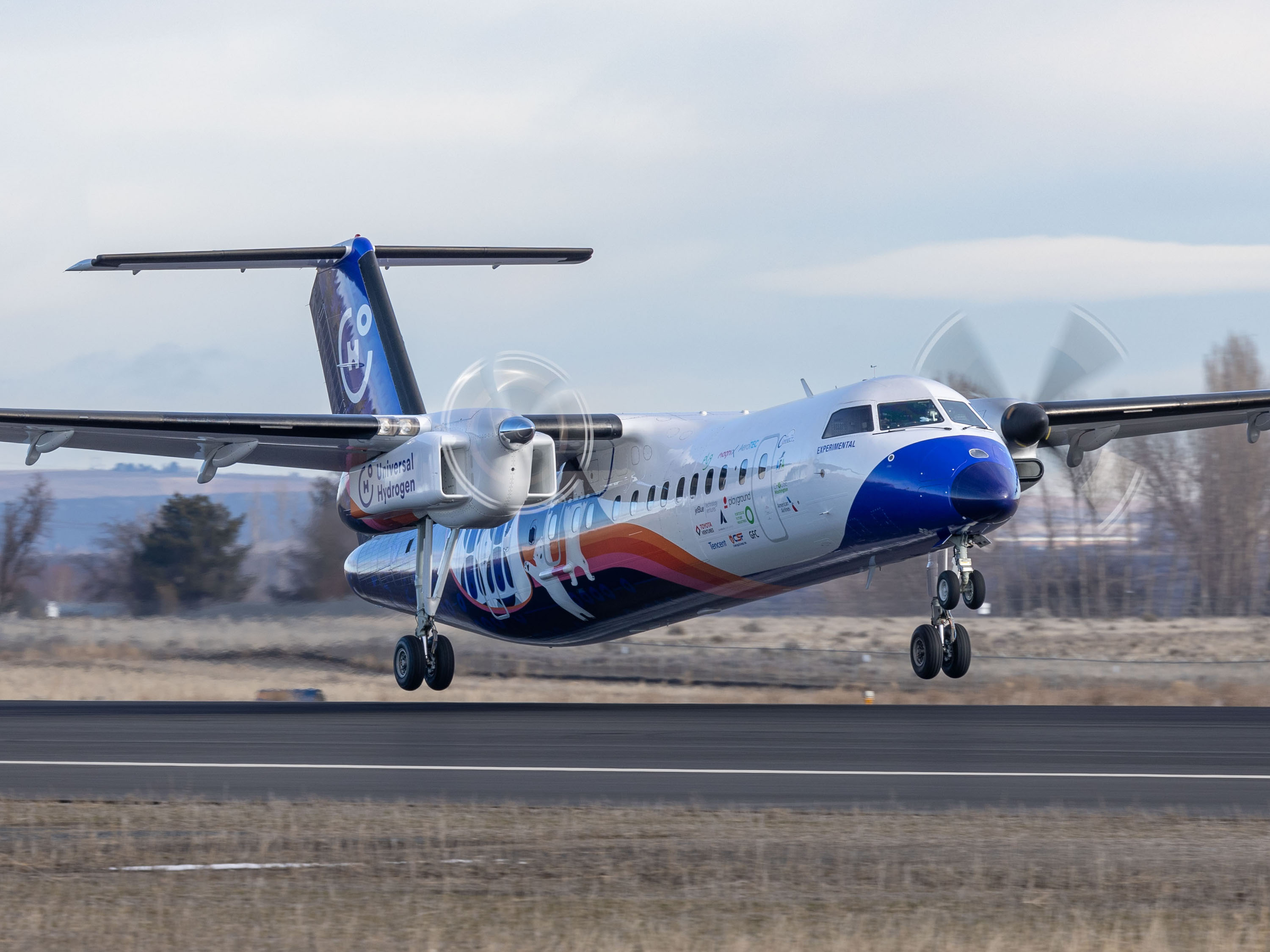
Now airborne, Universal Hydrogen looks ahead to ATR commercialization
Technical challenges and configuration decisions lay ahead for the startup's first exclusively hydrogen powered regional aircraft retrofit.
 theaircurrent.com
theaircurrent.com

A Startup Just Tested 2-Megawatt Electric Aircraft Engines for Passenger Planes
Airliner startup Wright Electric aims to launch a single-aisle electric aircraft by 2030.
Electric planes herald new traffic patterns in the Nordics — Nordic Labour Journal
Electric planes might do more than reduce CO2 emissions. They could also open up a new category of commuting with new, shorter routes. Electric planes would also bring new jobs to manufacturing and at smaller airfields.
Rhinocrates
ACCESS: Top Secret
- Joined
- 26 September 2006
- Messages
- 2,112
- Reaction score
- 4,509
The Accel Plane, its engineering, and follow-up. The presenter and founder of the channel is Robert Llewellyn, who some might remember as Kryten in Red Dwarf.
View: https://www.youtube.com/watch?v=RhbDeEEo8F4
Recording an eye watering 345 mph, the Accel Plane is officially the fastest electric vehicle on the planet! Before it retires to the Science Museum, Imogen and Robert wanted to meet the team from Rolls Royce, Evolito, Yasa and Electroflight to find out how they've made electric flight take off! From axial flux motors, advanced cooling and packing staggering amounts of torque - this plane is choc-a-bloc with astounding technologies that are paving the way to mainstream electric aviation.
00:00 A lot can happen in 6 years 01:19 A 345mph all electric aircraft 02:31 What's the point in breaking records? 03:05 The techy bit and a load of motors 05:24 What's next for electrified aerospace? 06:00 What about the batteries? 07:34 Drain the battery in 8 minutes 08:18 A tiny gigafactory 08:48 A whole lot of power from an impossible motor 09:48 Axial vs radial flux 11:15 All torque 12:20 What's next? 14:20 A hub of ingenuity
Recording an eye watering 345 mph, the Accel Plane is officially the fastest electric vehicle on the planet! Before it retires to the Science Museum, Imogen and Robert wanted to meet the team from Rolls Royce, Evolito, Yasa and Electroflight to find out how they've made electric flight take off! From axial flux motors, advanced cooling and packing staggering amounts of torque - this plane is choc-a-bloc with astounding technologies that are paving the way to mainstream electric aviation.
00:00 A lot can happen in 6 years 01:19 A 345mph all electric aircraft 02:31 What's the point in breaking records? 03:05 The techy bit and a load of motors 05:24 What's next for electrified aerospace? 06:00 What about the batteries? 07:34 Drain the battery in 8 minutes 08:18 A tiny gigafactory 08:48 A whole lot of power from an impossible motor 09:48 Axial vs radial flux 11:15 All torque 12:20 What's next? 14:20 A hub of ingenuity
alberchico
I really should change my personal text
- Joined
- 14 January 2014
- Messages
- 573
- Reaction score
- 1,082
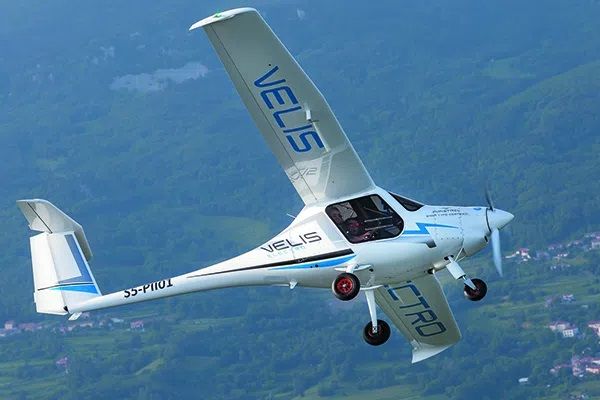
Pipistrel Velis Electro: Certified Electric - AVweb
Although nicely executed, the Velis' endurance is too limited to make it practical for U.S.-style training. Operating costs are a moving target.
 www.avweb.com
www.avweb.com
A good in depth analysis of the Velis Electro. Long story short, it's a well designed aircraft, but the electric version costs twice as much as the basic Rotax version, it only has 20 minutes of flight time in which to conduct training with FAA legal reserves factored in, and there's the issue of the battery needing to be replaced every so often, at a cost of 22,000. This aircraft is also restricted to VFR only operations. So as a trainer it still needs significant improvements to pose a challenge to Cessna and Piper. The electric engine also has to be treated more delicately than that of a Cessna 172, which could be an issue because training aircraft typically suffer a lot of wear and tear from inexperienced student pilots.
However you end up saving on fuel costs on the long run. So it will be interesting to see if future battery improvements could make this aircraft a viable prospect by the mid 2030's.
Last edited:
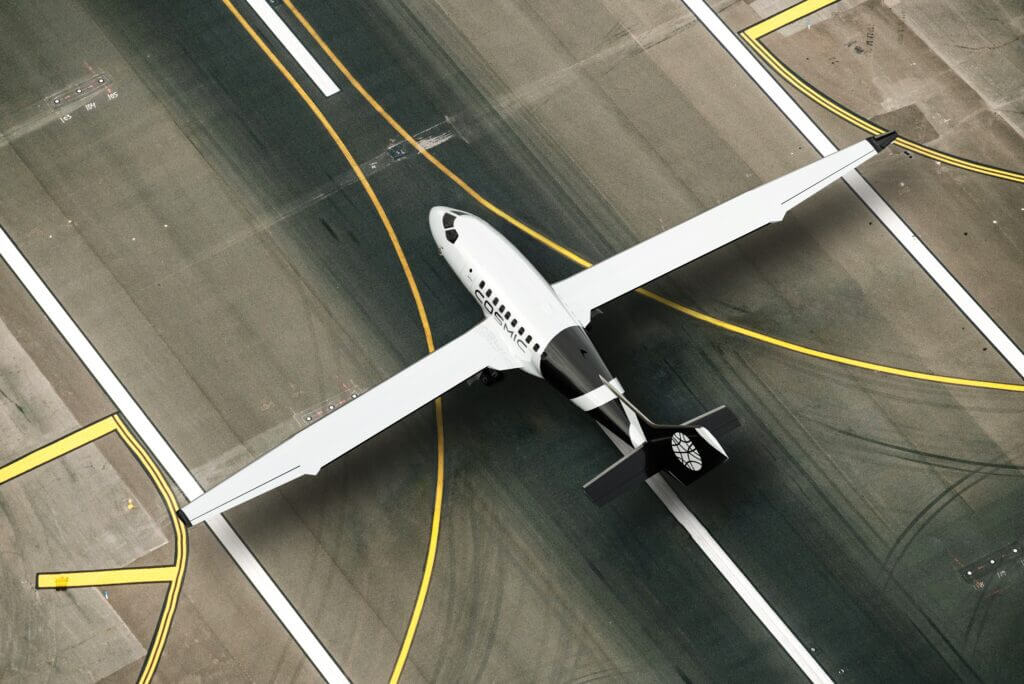
Start-up Cosmic Aerospace building ‘first electric aircraft with airline range’ - Skies Mag
Cosmic Aerospace is designing an energy efficient electric aircraft, with an electric jet propulsion system, that can carry 25 passengers up to 1,000 km.
I'm totally convinced....
Start-up Cosmic Aerospace building ‘first electric aircraft with airline range’ - Skies Mag
Cosmic Aerospace is designing an energy efficient electric aircraft, with an electric jet propulsion system, that can carry 25 passengers up to 1,000 km.skiesmag.com
Maybe I will offer an even better electric plane with twice the range and speed next week...
Somebody will invest in my plane?
alberchico
I really should change my personal text
- Joined
- 14 January 2014
- Messages
- 573
- Reaction score
- 1,082
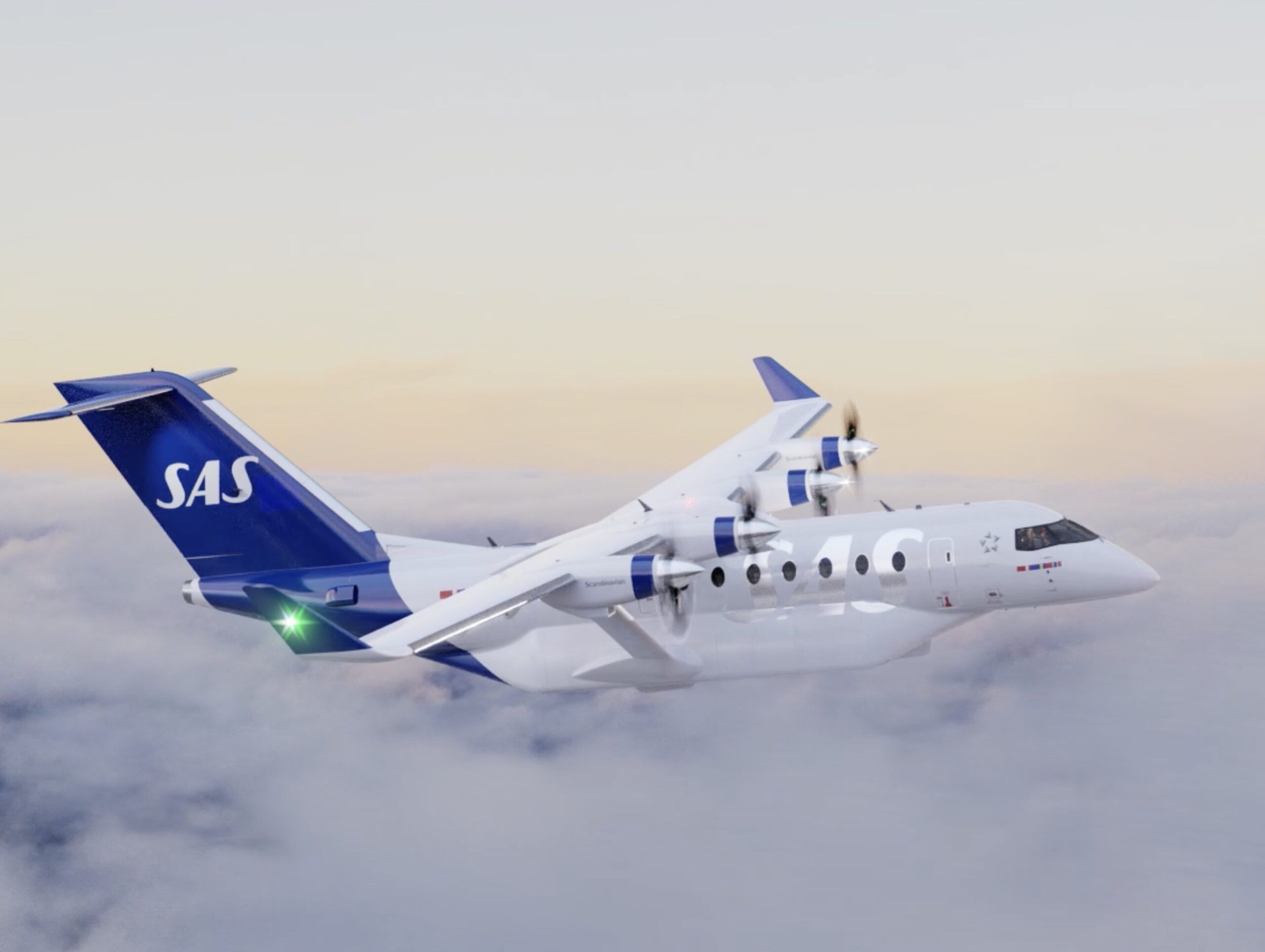
Electric Airliners? Don't Plan Your Trip Yet - AVweb
A 30-seat electric airliner? Doubtful. On the other hand, what if they're right?
 www.avweb.com
www.avweb.com
Even though I definitely feel we will see small 11 seat electric commuter planes in the future, an electric aircraft the size of a SAAB 340 seems a bit out of reach for now.
Similar threads
-
-
-
Electric Aviation Group (EAG) Hybrid Electric Regional Aircraft (HERA)
- Started by fightingirish
- Replies: 11
-
Speculation on the 7th, 8th and 9th generation Fighter
- Started by Michel Van
- Replies: 11
-
